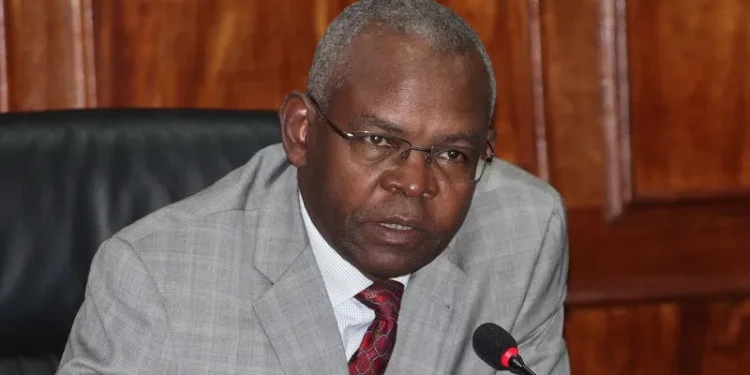Kenya’s central bank has lowered its benchmark interest rate for the first time since April 2020, citing easing inflationary pressures and a stable economic outlook.
The Monetary Policy Committee (MPC) of the Central Bank of Kenya (CBK) cut the Central Bank Rate (CBR) by 25 basis points to 12.75 percent on Tuesday, signaling a gradual shift towards monetary easing.
The decision comes amid a backdrop of improving global economic conditions and declining domestic inflation. Kenya’s overall inflation rate dropped to 4.3 percent in July 2024 from 4.6 percent in June, remaining below the mid-point of the central bank’s target range.
Dr. Kamau Thugge, Chairman of the MPC, stated, “The Committee noted that its previous measures have lowered overall inflation to below the mid-point of the target range, stabilized the exchange rate, and anchored inflationary expectations.” He added that the decision to lower the CBR was made to support economic growth while maintaining price stability.
The CBK’s move aligns with a broader trend of monetary policy easing in major economies. As global inflationary pressures subside, central banks in several countries have begun lowering interest rates. The MPC noted this shift, stating, “Central banks in some major economies have lowered interest rates in response to easing inflationary pressures, with indications that other central banks will soon embark on a similar trajectory.”
Kenya’s economy has shown resilience in the face of global challenges. The country’s real GDP grew by 5.0 percent in the first quarter of 2024, driven by strong performance in agriculture and the services sector. The CBK projects economic growth to reach 5.4 percent in 2024, up from 5.6 percent in 2023.
The agriculture sector, a key driver of Kenya’s economy, has benefited from favorable weather conditions. The July 2024 Agriculture Sector Survey indicates optimism among respondents regarding inflation expectations, with many anticipating stable or decreasing prices in the coming months due to improved food supply and a stable exchange rate.
Despite the positive outlook, the MPC acknowledged potential risks to economic growth, including geopolitical tensions and their impact on global trade and investment flows. The committee also noted concerns raised by business leaders about recent protests and the high cost of doing business in Kenya.
On the external front, Kenya’s current account deficit has narrowed to an estimated 3.7 percent of GDP in the 12 months to June 2024, down from 4.2 percent in the same period of 2023. This improvement is attributed to increased exports of agricultural commodities and a decline in imports across most categories.
The banking sector remains stable, with strong liquidity and capital adequacy ratios. However, the ratio of gross non-performing loans (NPLs) to gross loans increased slightly to 16.3 percent in June 2024 from 16.1 percent in April. The CBK reported that banks have continued to make adequate provisions for these NPLs.
Looking ahead, the MPC emphasized its commitment to closely monitoring economic developments and standing ready to take further action if necessary. Dr. Thugge concluded, “The MPC will closely monitor the impact of the policy measures as well as developments in the global and domestic economy and stands ready to take further action as necessary in line with its mandate.”


















